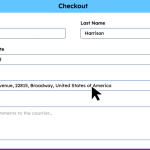Wireless networks are now an integral part of daily life, offering seamless internet access for homes, businesses, and public areas. But with the convenience of wireless connectivity comes a heightened need for security. One area particularly vulnerable to intrusion is Wi-Fi Protected Setup (WPS), a standard designed to simplify the process of connecting devices to a wireless network. While intended for user-friendly access, WPS has also opened doors to security flaws that attackers can exploit. This vulnerability has led to the rise of specialized tools meant to test, audit, and sometimes exploit WPS-enabled networks. Among these, Waircut has emerged as a popular and widely discussed utility in the cybersecurity community.
Understanding the Context of WPS Vulnerabilities
WPS was introduced by the Wi-Fi Alliance in 2006 as a means to simplify the connection of non-technical users to Wi-Fi networks. The goal was simplicity—by pressing a button on the router or entering a short PIN, users could quickly establish a secure connection without fumbling through long passwords.
However, this convenience came at a price. The WPS PIN method, in particular, has proven to be highly vulnerable to brute-force attacks. Because the PIN is only eight digits long and is validated in two separate halves, the actual number of combinations that an attacker needs to try is drastically reduced. This flaw effectively enables attackers to discover the correct PIN within a matter of hours or even minutes, depending on the sophistication of their tools and the router’s responsiveness.
Introduction to Waircut
Waircut (Wireless Air Cut) is a Windows-based software tool explicitly designed to audit WPS security on Wi-Fi networks. Developed as an open-source project, Waircut is capable of checking the vulnerability of WPS-enabled routers and attempting to retrieve the network’s password through a method known as a WPS PIN attack. It is often bundled with another tool called JumpStart, which helps facilitate the connection once a valid PIN is found.
Its primary purpose is to assist security professionals and knowledgeable users in testing their own networks for vulnerabilities. However, due to its capabilities, Waircut has also found use in more questionable contexts. Nevertheless, the tool remains a valuable resource for those looking to better understand and secure their wireless environments.
Key Features and Functional Capabilities
Waircut boasts a user-friendly graphical interface that makes it accessible even to users who are not deeply versed in command-line utilities. Some of the main features of Waircut include:
- Automated WPS Scanning: It identifies WPS-enabled networks within range and collects key details about each, such as MAC address, signal strength, and router model.
- PIN Dictionary and Algorithm Attack: Waircut includes a dictionary of known default WPS PINs for many common router brands. It also supports algorithmic prediction of PINs based on MAC address or model, increasing its effectiveness.
- Brute-force Capabilities: For routers that do not use default or algorithmically predictable PINs, Waircut can initiate a brute-force attack to try all possible combinations.
- JumpStart Integration: Once a valid PIN is found, Waircut can automatically attempt to connect to the network using JumpStart, facilitating direct access.
- Router Information Display: The tool reveals information about the target network and device, helping users make informed decisions about testing strategies.
Advantages of Using Waircut for Security Testing
One of the reasons Waircut is held in high regard is due to its balance between power and accessibility. Unlike many penetration testing tools that require deep Linux knowledge or terminal-based operations, Waircut’s Windows GUI provides a gentler learning curve. This makes it suitable not only for security professionals but also for technically literate home users who want to evaluate the security of their own networks.
Additionally, Waircut’s reliance on known vulnerabilities and predictable PINs reflects a practical understanding of real-world security lapses. Many routers continue to ship with WPS enabled by default and use factory-set PINs that are easily guessable. Waircut helps identify such weaknesses so they can be remedied.
The tool is also lightweight and does not require extensive hardware or system resources, meaning it can be run on most Windows systems with a compatible wireless card.
Concerns and Limitations
Despite its usefulness, Waircut is not without drawbacks. It only works on Windows, limiting its applicability in environments where Linux or macOS are preferred. Furthermore, not all wireless cards are compatible with the tool, and setting up the required drivers and dependencies can be problematic for some users.
Another significant concern is the ethical and legal dimension. While Waircut is designed for legitimate security testing, its capabilities can easily be misused. Unauthorized access to someone else’s network using Waircut constitutes a serious breach of privacy and can result in legal consequences. This dual-use nature makes it a controversial tool in certain circles.
Waircut is also somewhat outdated compared to newer Linux-based alternatives like Reaver and Bully. These tools offer more advanced capabilities, greater customization, and broader compatibility, especially in enterprise-level audits. Furthermore, Waircut does not support WPA3, which is becoming the new standard in Wi-Fi security.
Comparison with Other WPS Tools
In the landscape of WPS auditing tools, Waircut holds a distinct place due to its GUI-based design and compatibility with Windows. However, when compared to other tools, its limitations become apparent.
- Reaver: One of the most well-known WPS attack tools, Reaver operates via command line on Linux systems and offers more in-depth control over the attack process. It is also more actively maintained than Waircut.
- Bully: Similar to Reaver, Bully is optimized for speed and precision. It is especially effective on routers with rate-limiting protections.
- PixieWPS: A tool used in conjunction with Reaver or Bully, PixieWPS is capable of offline brute-force attacks using partial information gathered during an initial handshake. This technique, known as a Pixie Dust attack, can be more efficient than traditional methods.
- Airgeddon: A multi-purpose bash script that includes WPS attack modules and integrates several tools, including Reaver and PixieWPS. It offers a broader scope than Waircut, but requires advanced knowledge and setup.
While Waircut may not be the most advanced or versatile tool available, its simplicity and ease of use ensure it remains a valuable option, especially for entry-level testing or casual use.
Use Cases and Practical Applications
Waircut’s most common use cases include:
- Home Network Security Audits: Individuals can check if their router is vulnerable to WPS attacks and take corrective action, such as disabling WPS or changing the default PIN.
- Educational Demonstrations: IT educators and cybersecurity instructors can use Waircut to demonstrate how WPS vulnerabilities are exploited and how they can be mitigated.
- Lightweight Penetration Testing: For smaller firms or freelance testers working in environments where Linux tools are unavailable, Waircut offers a quick and effective way to conduct audits.
- Legacy Device Testing: In situations involving older routers that may still rely on WPS, Waircut provides a practical solution for evaluating security status.
Steps to Secure Your Network Against WPS Attacks
Regardless of whether Waircut is used or not, protecting a wireless network from WPS-based intrusions is essential. Here are some key steps:
- Disable WPS: The most effective way to prevent attacks is to disable WPS entirely through the router’s administrative settings.
- Change Default Credentials: Always change the default login credentials for your router’s admin panel. Leaving these unchanged is a common oversight.
- Use Strong WPA2/WPA3 Passwords: Even if WPS is disabled, having a robust Wi-Fi password is critical. Avoid dictionary words or easily guessed combinations.
- Regular Firmware Updates: Router manufacturers often release patches to address security flaws. Ensure your router’s firmware is up to date.
- Enable Network Logging: Monitor who connects to your network and review logs periodically to detect suspicious activity.
- Use MAC Filtering or Access Controls: Restrict which devices can connect to your network by specifying allowed MAC addresses.
Future of WPS and Tools Like Waircut
The future of WPS as a standard appears uncertain, especially with the rising adoption of WPA3, which does not include WPS in its specifications. WPA3 offers a more secure method of device pairing and encrypted communication, reducing the need for outdated shortcuts like WPS.
Consequently, tools like Waircut may become obsolete in the coming years as newer routers ship without WPS functionality. However, until then, many older routers remain in use, particularly in developing regions or among users with limited technical knowledge. This reality ensures that Waircut and similar tools will continue to serve a role in auditing and securing legacy devices.
Moreover, Waircut could potentially evolve to adapt to new standards and include modules for testing WPA3 compatibility or other network vulnerabilities. Its open-source nature makes it a candidate for community-driven development and innovation.
Conclusion
Waircut stands as a valuable tool for testing the security of WPS-enabled networks. Its ease of use, Windows compatibility, and focus on known vulnerabilities make it accessible to a wide range of users. While it may not be the most advanced tool available, it serves its purpose effectively in specific contexts, especially for beginners or those auditing older routers.
However, with newer and more secure wireless standards becoming the norm, reliance on tools like Waircut may decrease over time. As the cybersecurity landscape continues to evolve, users and professionals alike must stay informed and adaptive.








